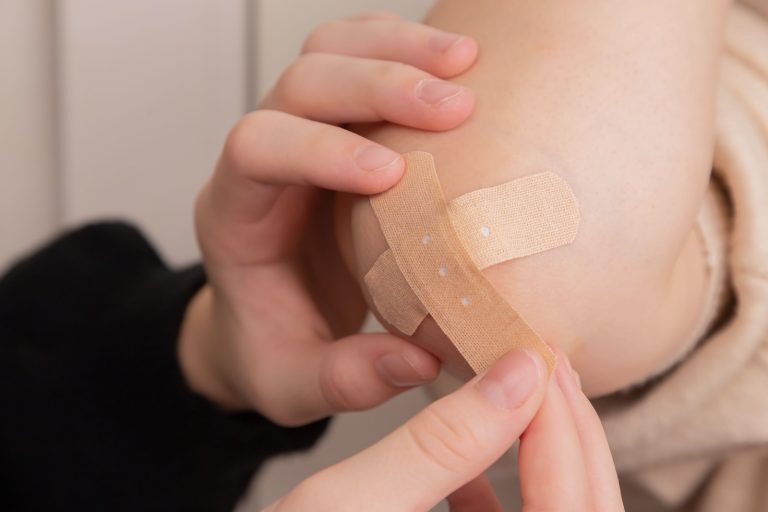When we step into a shopping mall, grocery store, restaurant, or office building, we usually don’t expect to slip or fall. However, the truth is that these accidents happen more often than we realize. Slip and fall incidents can occur due to factors like wet floors, uneven surfaces, loose rugs or mats, poor lighting, or other obstacles. When such accidents happen in commercial spaces, it raises questions about who should take responsibility for the person’s well-being and potential compensation.
There are countless legal professionals you could call now to learn more about the legalities of liability and slip-and-fall accidents in commercial places. Meanwhile, this article aims to provide a third-person perspective on slip-and-fall incidents in commercial spaces to help readers better understand their rights and the responsibilities of businesses.
Defining Key Terms
Before diving into the details of liability regarding slip and fall incidents, let’s clarify some terms commonly used in this context:
- Slip: A slip occurs when there isn’t friction between someone’s foot or shoe sole and the floor surface, causing them to lose balance.
- Fall: A fall happens when someone completely loses their balance and ends up hitting the ground or another surface.
Liability and Negligence
Liability refers to the responsibility of compensating damages caused by someone’s actions or negligence. When we visit commercial premises, we often focus on our shopping errands or on engaging with businesses. However, it is important to note that business owners and occupants have a duty to ensure that their premises are reasonably safe from known conditions and even hazardous conditions that can be anticipated based on certain situations.
Business owners/occupiers have a “duty of care” towards their visitors. This means they must take steps to address and prevent hazards that could cause harm while people are on their property. This duty includes property inspections, resolution of dangerous conditions, warning visitors about any existing risks, and taking necessary precautions for everyone’s safety within the commercial space.
In some situations, fault may be shared between the injured party and the owner/occupier of the premises. This is known as “negligence.” It means that if someone who gets injured is found to have contributed to their injury by not taking reasonable precautions for their safety, the amount of compensation they can claim may be reduced accordingly.
Steps to Follow After a Slip and Fall Incident
The following are the essential steps to follow if you have been involved in a slip and fall incident:
- Documentation: If you find yourself involved in a slip and fall incident on commercial premises, it’s important to document everything accurately. Take photographs of the condition that caused your fall or resulted in damages. Make sure to note down details such as the time, date, and description of the area where the incident occurred (including dimensions and color). Also, try to gather contact information from any witnesses at the scene.
- Seek Immediate Medical Assistance: Getting medical attention should always be your first priority after experiencing a slip and fall accident in a commercial space. Even if your injuries don’t appear severe initially, complications may arise later on. Having your medical records in place will also play a crucial role when seeking compensation for your injuries.
- Report the Incident to Management: Once you have received care immediately after the incident or in subsequent treatment intervals, it’s essential to report the incident as soon as possible to the management within the establishment where it happened. Timely reporting ensures that there is a record of what transpired during the accident.
In addition, many states have requirements for notifying authorities within specific timeframes. Failure to do so may increase the chances of pursuing legal action and determining liabilities.
Understanding Premises Liability
When it comes to slip and fall accidents in commercial spaces, the concept of premises liability becomes relevant. This principle states that if someone gets injured on another person’s property due to hazardous conditions, the property owner or occupier can be held responsible for the injuries. However, the extent of this liability can vary depending on the circumstances surrounding the incident.
Factors Influencing Liability:
Several factors come into play when determining liability in slip and fall cases. These factors include whether the owner or occupier was aware of the condition, how long that condition existed before the accident occurred, whether there were any warning signs indicating danger, and whether the injured person demonstrated reasonable caution. It’s also important to note that these laws may differ based on the jurisdiction.
Conclusion
Slip and fall accidents in commercial spaces can result in harm to individuals both physically and financially while also affecting them emotionally. Understanding premises liability is essential in determining who may be held responsible for these accidents. To ensure you receive fair compensation for any injuries sustained in a slip and fall incident, it’s important to be aware of your rights, accurately document the incident, seek medical attention, report it to management, and consult with a slip and fall attorney if necessary. Remember that every case is different. Hence, it’s crucial to obtain guidance tailored to your specific situation.



0 Comments